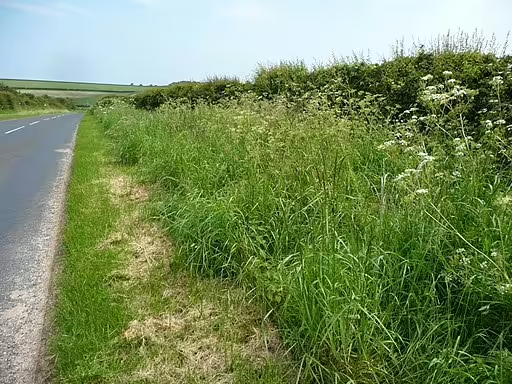Table of Contents for Bract Milkweed (Asclepias brachystephana)
Bract Milkweed (Asclepias brachystephana) is a herbaceous perennial that is native to the south-central and southwestern United States. This plant is a host to the Queen (Danaus gilippus) and Monarch (Danaus plexippus) butterflies. Growing from 0.5 to 2 feet tall, this species has red to purple flowers that bloom from April to September. It is hardy in zones 6-10.
Taxonomy and Naming of Bract Milkweed (Asclepias brachystephana)


Taxonomy
Bract Milkweed (Asclepias brachystephana) was originally named and described by Georg Engelmann, a German-American botanist. However, since the species was not validly published, John Torrey, an American validly published the species using Engelmann’s description. The species has kept this name since this time and is a member of the Dogbane Family (Apocynaceae).
Meaning of the Scientific and Common Names
Scientific Name
The genus name, Asclepias, is named for the Greek god of healing, Asklepios (Flora of Wisconsin). The species name, brachystephana, comes from the Latin, for little crown, presumably referring to the flowers.
Common Name and Alternative Names
The common name refers to the bracts of the flowers. Other common names include purple milkweed (Paredez, et al 2006), referring to one of the flower colors and short-crown milkweed, in reference to the flower shape.
Physical Description of Bract Milkweed (Asclepias brachystephana)

Description
- Plant Type: This plant is a herbaceous perennial
- Height: 0.5 to 1.5 feet
- Stem: The stem is branching and pubescent when young.
- Leaves: The leaves are opposite, short-petiolate, simple, entire, and lanceolate to linear-lanceolate in shape. The leaves are 2 to 5 inches long and about 0.2 to 0.5 inches wide (Woodson 1954).
- Flower color: red, pink to purple or greenish-purple
- Blooming period: This plant blooms from April to September.
- Fruiting type and period: This plant has follicles that mature in the late summer.
Range of Bract Milkweed (Asclepias brachystephana) in the United States and Canada

This milkweed species is native to the south-central and southwestern United States. It is also in northern Mexico.
Habitat

This species grows in dry mesas and disturbed areas with sandy soil. This includes right-of-ways and roadsides where it is often planted (McCoshum and Agrawal 2021).
Hosted Insects

This species is a host for the Monarch Butterfly (Danaus plexippus), the Queen Butterfly (Danaus gilippus), the Milkweed Tussock Moth (Euchaetes egle), and the Crimson-bodied lichen moth (Lerina incarnata) (McCoshum and Agrawal 2021).
Other Supported Wildlife

This species is a nectar source to other butterflies, skippers, bees, and wasps during the growing season. Birds also like this plant.
Frequently Asked Questions about Bract Milkweed (Asclepias brachystephana)
Is this plant poisonous?
Like other milkweeds, it has cardiac glycosides (cardenolides) and is considered to be poisonous with ingestion.
Does this plant have any ethnobotanical uses?
The Native American Ethobotanical Database does not mention this plant specifically, but milkweeds in general have been used for pharmaceuticals, foods, and fibers.
How is this plant distinguished from other milkweeds?
This species is most similar to Ruth’s milkweed (Asclepias ruthiae) and Cutler’s milkweed (Asclepias cutleri), but each of these species are much smaller. In addition the ranges of the species do not overlap. Asclepias brachystephana is also similar to the wheel milkweed (Asclepias uncialis), but is distinguished from the wheel milkweed by the hoods on the short-crown milkweed being only half as long as the anthers (Wooton 1915).
Is this plant invasive?
This plant has not been shown to be invasive in the literature.
Gardening with Bract Milkweed (Asclepias brachystephana)

Hardiness
This species is hardy in zones 6-10. If your garden is within these zones and you have the right growing conditions (soil, moisture and exposure), you may well be able to grow this plant. However, if planted outside of its range, the hosted species may not recognize the plant or be harmed by ingesting a different species with an unfamiliar chemical composition.
Optimal Conditions
This species grows best in places that have full sun and well-drained soils.
References
- McCoshum, Shaun M. and Anurag A. Agrawal. 2021. Ecology of Asclepias brachystephana: a plant for roadside and right-of-way management. Native Plants Journal 22 (3): 256-267.
- Paredez, Jessica D., Sandra L. Woods, and Lynn A. Simpson. 2006. The Vascular Flora of Howard County, Texas. Texas Journal of Science 58(1): 23-44.
- Woodson, Robert E. 1954. The North American Species of Asclepias L. Annals of the Missouri Botanical Garden 41: 1-211.
- Wooton, E.O. and Paul Carpenter Stanley. 1915. Flora of New Mexico. Contributions from the United States National Herbarium v. 19


